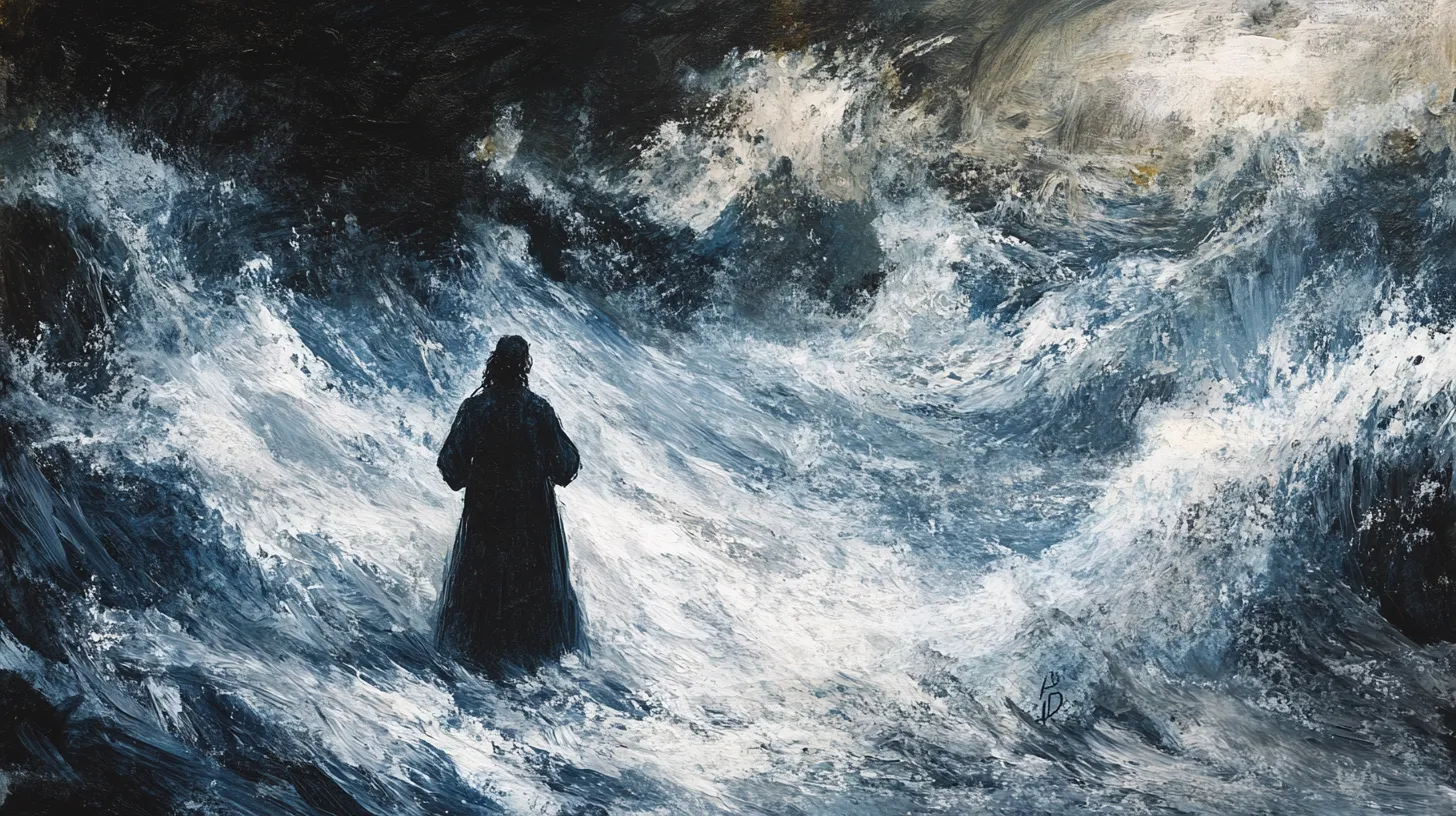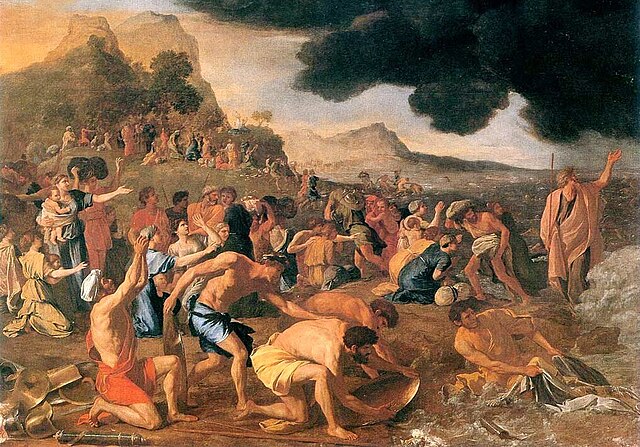Were Ancient Jew Afraid Of Drowning
- Were Ancient Jews Afraid of Drowning
- Cultural Perspectives on Water and Fear
- Historical Accounts of Water-Related Tragedies
- Religious Significance of Water in Ancient Texts
- Common Myths and Superstitions Surrounding Drowning
- Modern Interpretations of Ancient Perspectives on Drowning
Were Ancient Jew Afraid of Drowning
The relationship between ancient Jews and water is complex, deeply interwoven with their cultural narratives, religious texts, and historical experiences. The question, “Were Ancient Jews Afraid of Drowning,” emerges not merely as an inquiry about fear but invites exploration into how such fears were embodied in various cultural and spiritual contexts.
To understand this nuanced perspective, we must first acknowledge the multifaceted role of water in the ancient world. Water was both a lifeline and a source of peril. The vast, unpredictable nature of bodies of water, such as the Mediterranean Sea, presented substantial dangers. For example, in biblical narratives, the sea often symbolizes chaos and destruction. The story of the Israelites crossing the Red Sea illustrates this dichotomy. One moment, water is a blockade; the next, it becomes the means of divine intervention. The terror of drowning can be inferred not just from the act of crossing but from the response of the people when confronted with the impending threat of the Egyptian army, illustrating a palpable fear reverberating through the collective consciousness.
Moreover, in examining ancient Jewish texts and folklore, we frequently encounter references that reflect a substantial anxiety towards water. The Talmud and Midrash often mention swimming or wading in deep waters as risky endeavors, illustrative of the assumption that water, while essential for life, could just as easily lead to death. This cautious approach can be attributed to the cultural understanding that deep waters harbored unknown dangers, aligning with contemporary fears surrounding drowning.
- Used Book in Good Condition
- Hardcover Book
- English (Publication Language)
- 394 Pages - 01/01/1992 (Publication Date) - JEWISH PUBLICATON SOCIETY (Publisher)
The ancient Jewish perspective on death, particularly through drowning, is also illustrated in various texts that recount tragedies associated with water. From the floods mentioned in the Book of Genesis to the metaphorical expressions of divine anger through storms, water serves as a powerful symbol of both life and death. This inclination to view water as a harbinger of death enhances the likelihood that fear of drowning existed in the collective psyche.
Another critical factor contributing to this fear may stem from the socio-environmental context. The ancient Jews were primarily agrarian, reliant on rivers and rainfall for agriculture. Floods could devastate crops and communities, leading to famine and loss of life. This cyclical relationship with water imprints a duality of reverence and dread in their worldviews. Hence, as water could be a source of sustenance, it could also bring destruction and death if not respected.
In gatherings and community rituals, references to experiences with water, including drowning, were likely woven into storytelling traditions. These narratives served as cautionary tales for children and adults alike, perhaps to instill a sense of awareness and prepare them for the potential perils associated with water. Such storytelling not only reinforces the idea that drowning was a significant fear but also highlights the pervasive notion that caution should always be exercised.
Additionally, we must explore the roles of myth and superstition in ancient Jewish culture concerning water-related fears. Certain beliefs, like the malevolent spirits believed to inhabit deep waters, further illustrate the anxieties associated with drowning. These myths often characterizing bodies of water as unpredictable entities reflect a profound discomfort with the idea of becoming lost or overpowered by water’s vastness.
Conclusively, the examination of whether ancient Jews were afraid of drowning reveals that their relationship with water was profoundly influenced by cultural, spiritual, and socio-historical dimensions. Through biblical narratives, cultural practices, and the interpretation of mythological elements, we ascertain that a certain apprehension existed. This fear was not merely an irrational phobia but an informed acknowledgment of water’s formidable power—an existential fear deeply embedded in the fabric of societal narratives and personal experiences.
Cultural Perspectives on Water and Fear
Cultural narratives in ancient Jewish society often reflect a complex relationship with water, intertwining reverence with a palpable sense of fear. The fluctuating nature of water as both a life-giving resource and a potentially deadly force creates an environment ripe for apprehension. Water bodies, particularly rivers and seas, were routinely perceived as unpredictable entities, stirring the collective imagination and instilling fears of drowning—a theme encapsulated in the inquiry, “Were Ancient Jews Afraid of Drowning.”
- Used Book in Good Condition
- Hardcover Book
- English (Publication Language)
- 394 Pages - 01/01/1992 (Publication Date) - JEWISH PUBLICATON SOCIETY (Publisher)
Given the cultural significance of water, ancient Jews approached it with respect and caution. Water was essential for their agrarian lifestyle, crucial for irrigation, drinking, and sustaining livestock. However, this necessity came with the inherent risks of flooding and drowning. Ancient texts frequently reference the consequential power of higher waters, offering insights into how such events influenced both daily life and broader cultural consciousness. The catastrophic Flood narrative in the Book of Genesis showcases the severe repercussions of uncontrollable water and the ultimate obliteration it can represent. This narrative serves as a stark reminder of water’s duality—its life-sustaining properties sharply contrasted with its capacity for destruction and death.
Myth and Superstition in Ancient Views of Water
Myths and superstitions played a crucial role in shaping ancient Jewish attitudes toward water and drowning. Various traditions held that malevolent spirits dwelled in deep waters, leading individuals to perceive rivers and seas as treacherous terrains. This cultural lens towards water as a possible abode for evil influences amplified fears. Consequently, stories of tragic encounters with water—whether through drowning or floods—were likely shared among communities as cautionary tales. These narratives sought to underline the necessity for vigilance around water bodies, as they could swiftly transform from tranquil to tumultuous.
In discussing drowning myths, folklore often depicted figures who drowned due to carelessness or hubris, reinforcing not only the dangers presented by water but also moral lessons about humility and respect for nature. Through storytelling, the community perpetuated a collective memory regarding the potential threats associated with water and furnished a moral framework to navigate these hazards. Such tales could have served to instruct children about the dangers inherent in deep waters and to encourage adults to exercise caution and respect for unpredictable natural forces.
Furthermore, ritual practices and community gatherings often included prayers and blessings related to water, underscoring its significance while simultaneously acknowledging its potential peril. The juxtaposition of religious observances aimed at honoring water with the underlying fear of drowning reflects a consistent theme of navigating the complexities of existence—striking a balance between reverence and fear. This dynamic illustrates that while water was vital for sustenance and community, it also represented an ever-present risk, embedding the fear of drowning into the cultural psyche.
Symbols of Fear and Transformation
In ancient Jewish symbolism, water often embodied chaos—an overarching theme dealing with transformation and rebirth, as demonstrated through stories such as the parting of the Red Sea. In these scenarios, water played a crucial role not only as a barrier but also as a transformative force, enabling the survival of the Israelites while simultaneously symbolizing annihilation for their pursuers. This duality mirrors the ambivalent feelings towards water itself—appreciation for its nourishing aspects, intertwined with the underlying dread of drowning.
- Used Book in Good Condition
- Hardcover Book
- English (Publication Language)
- 394 Pages - 01/01/1992 (Publication Date) - JEWISH PUBLICATON SOCIETY (Publisher)
Moreover, the association of water with divine anger and judgment further cements the fear of drowning as a lingering concern in the ancient Jewish consciousness. Storms and floods frequently appeared as manifestations of divine retribution in scriptural accounts, intensifying the natural fear stemming from water’s unpredictable brutality. As such, historians and scholars assert that the cultural perspectives surrounding water and drowning in ancient Jewish society were not merely folklore but reflections of real-life experiences and sensitivities toward their environment.
The exploration of these cultural perspectives on water and fear illustrates a profound awareness and understanding of the complexities that ancient Jews navigated in their day-to-day lives. The interplay between reverence and dread towards water underscores a calculated approach informed by the recognition of water’s powerful, at times terrifying, potential. In acknowledging that “Were Ancient Jews Afraid of Drowning,” we glean crucial insights into how fear and respect for the natural world shaped the narratives that defined their societal values and communal practices.
Historical Accounts of Water-Related Tragedies
Throughout ancient history, there are numerous accounts of water-related tragedies that reflect the fears and anxieties surrounding drowning, paralleling the question of “Were Ancient Jews Afraid of Drowning.” Such events left indelible marks on the collective memory of the ancient Jewish community.
Historically, one notable episode of drowning is the narrative of the Egyptian pursuit of the Israelites. As the people fled from slavery, they were ensnared between the advancing army and the Red Sea. The imminent threat of drowning loomed over them, creating a palpable sense of terror. While this account culminates in miraculous salvation, it simultaneously underscores the ever-present fear of water as a treacherous force. The deep waters offered both danger and destiny, embodying the existential struggles between survival and annihilation.
Similarly, the story of Noah and the flood in the Book of Genesis presents another account where water wreaks havoc and destruction. The flood signifies divine wrath, leading to widespread drowning and loss of life, reiterating the understanding of water as a potent force for death. This narrative, along with others, establishes a mythos around water as a source of both life and potential destruction, fueling anxiety that could echo through generations. As ancient Jews reflected on such accounts, the fear of drowning could have been ingrained in their cultural consciousness.
Moreover, across various historical texts, there are references to tragic incidents involving drowning in rivers and seas. The Talmud recounts stories of individuals who met their fates in deep waters, amplifying this sense of danger associated with water. These texts often emphasize caution and respect for natural elements, reflecting a societal acknowledgment of the risks inherent in navigating these territories.
Data from archaeological studies shows that ancient communities faced significant water-related catastrophes. The following table summarizes documented incidents and their impact:
| Year/Event | Location | Casualties | Notes |
| c. 3000 BCE | Mesopotamian Flood | Unknown | Destruction of local settlements |
| c. 1500 BCE | Red Sea Crossing | Numerous Egyptians | Symbol of divine intervention and death |
| c. 500 BCE | Flooding of the Euphrates | Varied estimates; potential local famine | Impact on agriculture and livelihoods |
| Biblical Times | Various River Floods | Greater community impact | Referenced in Talmud and historical texts |
The historical accounts of such tragedies reveal that the fear of drowning was not merely a superstitious dread but rooted in tragic realities that ancient Jews had to face. Each tale served to reinforce the collective awareness of the dangers posed by water, perhaps heightening the anxiety encapsulated in the idea of “Were Ancient Jews Afraid of Drowning.” These narratives weren’t standalone events; they became part of a larger discourse on the unpredictable nature of water, ultimately feeding an enduring reverence mixed with trepidation that influenced societal norms and communal practices regarding water safety well into future generations.
Further, legal texts and rabbinical writings often provided guidance regarding activities around water bodies. These writings not only discussed the rules and restrictions necessary for survival but also reflected a systemic approach
Religious Significance of Water in Ancient Texts

The Dual Nature of Water in Jewish Texts
In biblical stories, water often carries dual implications. On one hand, it is a source of renewal and sustenance, as seen in references to the rivers of Eden (Genesis 2:10-14) and the springs that provide water for the thirsty (Isaiah 41:17). On the other hand, it can represent destruction and chaos, creating a complex emotional landscape that ancient Jews navigated. The overwhelming flood in the story of Noah obliterates life, solidifying water’s role as a divine instrument of judgment. This association reveals how water commanded both reverence and fear, underscoring the notion that “Were Ancient Jews Afraid of Drowning” was not merely a rhetorical question but a reflection of their lived experiences.
Furthermore, the parting of the Red Sea serves as another poignant example of water’s duality in Jewish thought: it becomes a miraculous salvation for the Israelites while simultaneously engulfing their oppressors. This narrative illustrates that water retained the power to engender fear—from drowning and loss to hope and deliverance—thereby revealing a deep-seated awareness of water’s formidable nature. Genesis 6 captures this narrative moment, reminding us of the unparalleled connection ancient Jews had with water in both its nourishing and destructive facets.
Water as a Symbol of Divine Power
Throughout ancient texts, water is often associated with divine intervention and power. The imagery of water could evoke feelings of divine anger, punishment, or even cleansing, thus embedding water-related fears into the cultural and spiritual fabric of the Jewish community. Instances of judgment, as seen in the prophetic texts, illustrate that floods and storms are manifestations of God’s will, reinforcing the idea that water could lead to drownings and destruction. The ritualistic practices surrounding purification through water further emphasize how water is integral to accessing divine presence while simultaneously acknowledging its risks.
Additionally, during moments of communal prayer, water plays a multifaceted role. It signifies not only a request for life’s sustenance but also an acknowledgment of the overwhelming threats that natural forces can pose. Verses from Psalms often capture this tension, implying that God alone has control over the waters: “The floods have lifted up, O LORD, the floods have lifted up their voice” (Psalm 93:3-4). The reverence for God’s power over the tumultuous waters speaks directly to the fears of drowning and the fragility of life intertwined with water.
Community Practices and Water Rituals
In the communal life of ancient Jews, water was pivotal in various religious ceremonies, reinforcing the idea that water possessed inherent power. Ritual baths (mikvahs) and blessings related to water illustrated a deeply ingrained cultural respect for cleanliness and purification. These practices not only highlighted the sacredness of water but also served as a recognition of its dangerous potential, with rules often established to ensure safety in water-related practices.
In contexts where water presented an ever-looming threat, solid communal structures emerged, promoting the collective memory of drowned individuals and cautionary tales of water dangers. Through oral traditions and storytelling, experiences and fears concerning drowning circulated among communities. Such narratives instilled caution in children and reinforced the need for vigilance around bodies of water. Communities often shared stories about drownings to highlight the importance of safety, reinforcing the theme that “Were Ancient Jews Afraid of Drowning” wasn’t just an individual concern but a community-oriented awareness.
Connection to the Environment and Cultural Sensitivity
The environmental realities that ancient Jews faced contributed to their understanding of water. Rivers played critical roles in their agrarian lifestyle, allowing for irrigation and fresh water. However, floods could jeopardize crops and settlements, leading to famine and loss of life. The Book of Exodus encapsulates how proximity to significant waterways, such as the Nile, intertwined their existence with both sustenance and peril. The socio-environmental context within which they lived shaped their historical narratives, whereby joy and life hinged precariously upon the same water that also posed risks of drowning.
Thus, the examination of religious texts and community practices reveals that the ancient Jewish relationship with water was complex, interlacing fear, reverence, and cultural identity. From biblical narratives to communal rituals, the exploration of whether “Were Ancient Jews Afraid of Drowning” emerges as a nuanced reflection of their broader understanding of the world. As they revered and feared water, they bequeathed an enduring legacy that continues to inform contemporary discourse surrounding drowning and water-related anxieties.
Common Myths and Superstitions Surrounding Drowning
Superstitions and myths surrounding drowning were prevalent in ancient Jewish culture, contributing significantly to the collective apprehension about water as a potentially deadly entity. Central to these beliefs were the notions of evil spirits dwelling in deep waters. It was commonly held that malevolent forces lurked beneath the surface, preying on unsuspecting individuals who ventured too close to riverbanks or into the seas. Such beliefs fueled an inherent fear, leading many to view bodies of water with suspicion and caution, reinforcing the idea that “Were Ancient Jews Afraid of Drowning” extended beyond mere fear into a deeply entrenched cultural landscape shaped by myth.
Roots of these superstitions can be traced in traditional storytelling, passed down through generations as cautionary tales that reinforced awareness of the dangers linked with water. These narratives often featured protagonists who ignored warnings and faced dire consequences, emphasizing the importance of respect and vigilance in the presence of water. Communities shared tales of drownings and near-misses, ensuring these narratives served to educate and instill caution in the young. The moral lessons woven into the fabric of these stories underscored societal values about humility and reverence for nature’s unpredictable power, thus embedding a tangible fear of drowning within the community’s psyche.
Additionally, ritual practices incorporated elements designed to protect individuals from the perils associated with water. Ancients often offered prayers and made sacrifices, seeking to appease deities believed to govern the waters. This spiritual dimension reflected a dualism in their view toward water—it was life-giving and nurturing, yet also a potential harbinger of death. By adhering to these protective rituals, individuals and communities created a layer of security against the unpredictability of water, which fed into the longstanding question: “Were Ancient Jews Afraid of Drowning?”
Amulets and charms specifically designed to ward off water-related misfortunes were not uncommon. People would carry such items as protection against drowning, believing that tangible symbols could stave off the dangers posed by deep waters. This intimate connection between belief and protective action illustrates how ancient Jews navigated their fears, creating tangible manifestations of their anxieties.
Moreover, certain lakes and rivers began to be seen as sacred or cursed based on local tradition and past tragedies. The stories of those who perished in specific waters turned them into sites of reverence and caution. Shrines or memorials might arise in the wake of drowning incidents, serving as a somber reminder of the perils associated with water. This cultural understanding reinforced the community’s collective consciousness around water and drowning, embedding fear into the very place where life and death coexisted.
Such fears were reinforced through reflections in religious texts and communal practices that acknowledged the significance of water while simultaneously illustrating its potential for destruction. The narratives surrounding significant events like the great flood in the Book of Genesis depicted water as a divine mechanism for judgment—this not only highlighted water’s destructive capabilities but also reinforced the belief that humans should remain vigilant in the face of its power.
In examining the question “Were Ancient Jews Afraid of Drowning,” it becomes clear that superstitions played an integral role in shaping perceptions surrounding water. Myths, combined with historical experiences of tragedy, contributed to a cultural landscape rife with anxieties this community faced. The amalgamation of fear, reverence, and caution in their relationship with water ensured that the specter of drowning was never far from their consciousness, affecting their stories, rituals, and social practices over generations.
Modern Interpretations of Ancient Perspectives on Drowning
Modern interpretations of ancient perspectives on drowning inform our understanding of how historical fears manifest in contemporary contexts. As we delve into this analysis, we recognize that the question “Were Ancient Jews Afraid of Drowning?” aligns with broader inquiries about humanity’s relationship with water and inherent fears surrounding it. The echoes of ancient anxieties still reverberate in contemporary society, influencing cultural practices and psychological perceptions of drowning.
In recent times, scholars and psychologists have explored the contextual relevance of ancient fears, particularly through the lens of cultural anthropology. The ancient Jewish relationship with water is examined through texts such as the Talmud and biblical narratives, offering insights into collective anxieties that remain relevant today. The dichotomy of water as both life-giving and life-threatening continues to shape current attitudes. Modern interpretations stress the importance of recognizing our history to understand contemporary fears surrounding drowning and water-related dangers.
The psychological aspect of fear also plays a crucial role in these interpretations. Modern psychology indicates that phobias often arise from deeply embedded historical narratives, as well as personal experiences. For ancient Jews, water held multifaceted meanings, incorporating spiritual, cultural, and social dimensions—these interpretations inform how individuals today approach the theme of drowning. The haunting tales of water-related tragedies and moral lessons woven throughout modern literature reveal that the anxiety originally directed toward bodies of water has transformed into fears of more personal and immediate nature, such as the fear of drowning in urban environments, during recreational activities, or even through natural disasters.
The ongoing legacy of ancient drowning narratives is also evident in contemporary art and literature, where themes of water serve as metaphors for chaos, transformation, and vulnerability. Writers and artists frequently draw upon the biblical accounts as a foundation for exploring the human condition. The pertinent themes in narratives about drowning emphasize vulnerability, loss, and the stark reality of life’s fragility, mirroring the ancient Jewish struggles with water’s dual nature. This profound connection between ancient stories and modern artistic expressions signifies an ongoing confrontation with our intrinsic fears—among them, the fear of drowning.
Furthermore, modern safety initiatives surrounding water engage with these ancient fears in practical terms. Lifeguard training programs, water safety campaigns, and community awareness efforts echo the caution exercised by ancient societies toward deep waters. The development of precautionary measures speaks volumes about how ancient fears continue to inform present-day responses to drowning. This is crucial in fostering a culture of respect and mindfulness toward water bodies, especially in light of the tragedies that have historically arisen from disregard for water’s potential dangers.
Moreover, environmental concerns over climate change bring new layers to the discussion about water, transforming fears that once revolved around drowning into apprehensions regarding rising sea levels, floods, and their impact on local communities. The historical experiences of water-related tragedies for ancient Jews—rife with lessons on the unpredictable and often tragic forces of nature—now find resonance in a context where modern communities confront ecological realities. As we recognize that “Were Ancient Jews Afraid of Drowning?” historical context informs contemporary dialogues on climate, safety, and vulnerability against the backdrop of nature’s omnipotence.
In conclusion, integrating ancient perspectives with modern interpretations leads us to a deeper understanding of our connection to water and the fears associated with it. The ancient Jewish experience, marked by the narrative of drowning and its connotations, has evolved but remains compellingly relevant in contemporary discourse. By examining how fears manifest in culturally significant ways, we are better equipped to confront our anxieties about drowning and, more broadly, our relationship with the life-sustaining yet perilous element of water. Embracing this historical context can guide both individual and communal practices aimed at fostering safety and respect for water in all its forms.

















Post Comment